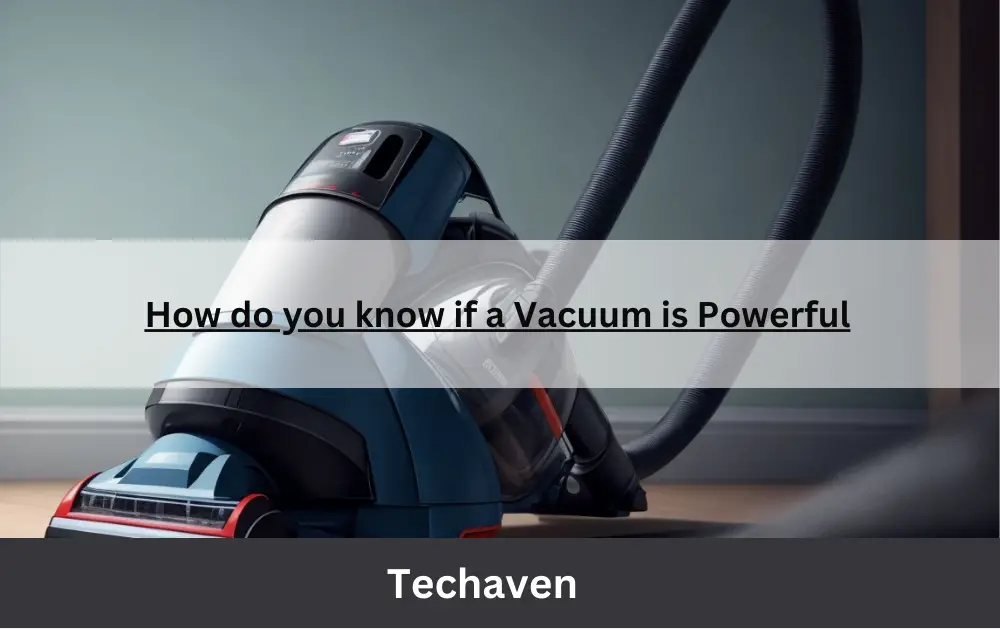A powerful vacuum cleaner is essential for maintaining a clean and healthy home environment. The ability to effectively remove dirt, dust, and allergens from various surfaces ensures that your living space remains comfortable and hygienic. In this article, we will explore the different factors that contribute to a vacuum’s power, such as suction power, airflow, filtration, design, and features.
By understanding these elements, you will be better equipped to select a vacuum cleaner that meets your specific cleaning needs and preferences. So, let’s dive into the world of vacuum power and discover how to determine the best choice for your home.
Suction Power
What is Suction Power?
Suction power is the force with which a vacuum cleaner can lift and remove dirt, dust, and debris from various surfaces. It plays a critical role in determining a vacuum’s overall performance and cleaning efficiency.
Measuring Suction Power
Suction power can be measured in various units, such as air watts (AW), cubic feet per minute (CFM), or pascals (Pa). When comparing vacuums, it is essential to consider these measurements to determine which device will provide the best cleaning performance. Generally, a higher value in these units indicates a more powerful vacuum cleaner.
Examples of Vacuums with High Suction Power
Some examples of vacuums with high suction power include the Dyson V11 Torque Drive, which boasts 185 AW of suction power, and the Miele Complete C3, which offers 1200 W of power.
Airflow
What is Airflow?
Airflow refers to the movement of air through a vacuum cleaner’s system. It is a crucial factor in determining a vacuum’s ability to pick up and transport dirt and debris from surfaces to the dust container.
Measuring Airflow
Airflow is typically measured in cubic feet per minute (CFM). A higher CFM value indicates a better ability to move air through the vacuum, resulting in more efficient dirt and debris removal.
Examples of Vacuums with High Airflow
The Miele Complete C3, with its 1200 W motor, provides exceptional airflow, resulting in excellent cleaning performance. Another example is the Sebo X7, which offers a powerful 1300 W motor and impressive airflow capabilities.
Filtration
Filtration and Vacuum Performance
The filtration system in a vacuum cleaner is responsible for trapping and removing particles from the air that passes through the device. A high-quality filtration system not only improves a vacuum’s performance but also contributes to better indoor air quality.
Types of Filtration Systems
There are several types of filtration systems available, including mechanical filters, cyclonic separators, and HEPA filters. Mechanical filters use a physical barrier to trap particles, while cyclonic separators use centrifugal force to separate particles from the air. HEPA filters are considered the most effective, capturing 99.97% of particles as small as 0.3 microns in size.
Examples of Vacuums with High-Quality Filtration Systems
The Dyson V11 Torque Drive features a whole-machine HEPA filtration system, while the Miele Complete C3 comes equipped with a sealed system and HEPA filter, ensuring optimal air quality during operation.
Design and Features
Vacuum Design and Power
A vacuum cleaner’s design and features can significantly impact its overall power and performance. Factors such as brush roll design, hose length, and attachments can affect a vacuum’s ability to clean different surfaces effectively.
Factors Affecting Vacuum Performance
- Brush Roll Design: The design of a vacuum’s brush roll can impact its ability to agitate and lift dirt from surfaces. A well-designed brush roll can enhance a vacuum’s cleaning capabilities.
- Hose Length: A longer hose allows for better reach and maneuverability, improving a vacuum’s overall performance.
- Attachments: Various attachments, such as crevice tools and upholstery brushes, can enhance a vacuum’s power by allowing it to tackle different cleaning tasks more effectively.
Examples of Vacuums with Innovative Designs and Features
The Shark Navigator Lift-Away NV352 features a detachable canister and swivel steering for improved maneuverability, while the Dyson V11 Torque Drive includes a high torque cleaner head that adapts to different floor types, enhancing its cleaning performance.
User Reviews
The Importance of User Reviews
Reading user reviews can provide valuable insights into a vacuum cleaner’s power and performance. These reviews offer firsthand accounts of how well a vacuum performs in various real-world situations.
Finding and Evaluating User Reviews
User reviews can be found on retailer websites, such as Amazon, as well as dedicated review sites like Consumer Reports. When evaluating reviews, consider the overall rating and read both positive and negative feedback to get a balanced perspective on a vacuum’s performance.
Examples of Vacuums with High Ratings and Positive Reviews
The Dyson V11 Torque Drive and Miele Complete C3 both boast impressive user ratings and positive reviews, with customers praising their powerful suction, effective filtration systems, and versatile design features.

